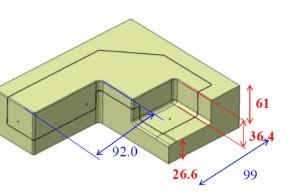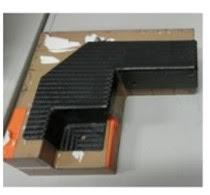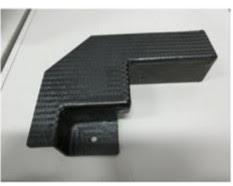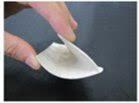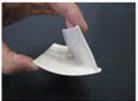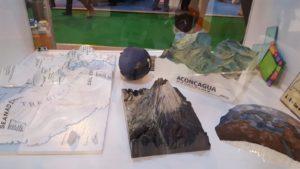Paper-Based 3D Printing Saves on Costs, Cuts Environmental Concerns for Automotive Manufacture — A Few Questions For: Mcor
 As we see time and time again, partnerships offer a key portal for mutually beneficial arrangements in many aspects of business. This is especially true in the additive manufacturing arena, where partnerships lead to greater developments of technology and materials, as well as for manufacturing in terms of both iterating and, increasingly, final production. Over the last year, 3D printer producer Mcor has been working with automotive manufacturer Honda to create cost-effective, dimensionally accurate molds that are said to offer peak thermal stability and a high-quality surface finish. Mcor has created Carbon Fiber Reinforced Polymer (CFRP) molds that Honda will be using in upcoming high-performance vehicle testing.
As we see time and time again, partnerships offer a key portal for mutually beneficial arrangements in many aspects of business. This is especially true in the additive manufacturing arena, where partnerships lead to greater developments of technology and materials, as well as for manufacturing in terms of both iterating and, increasingly, final production. Over the last year, 3D printer producer Mcor has been working with automotive manufacturer Honda to create cost-effective, dimensionally accurate molds that are said to offer peak thermal stability and a high-quality surface finish. Mcor has created Carbon Fiber Reinforced Polymer (CFRP) molds that Honda will be using in upcoming high-performance vehicle testing.
Prototypes made using these CFRP molds offer several benefits over traditionally manufactured — or even stereolithography-produced — molds, showing a ten-time ($17 versus $170) cost reduction compared to CNC-made molds, as well as a higher toughness than SLA-made molds due to their high strength-to-weight ratio and rigidity. Furthermore, Mcor notes that because all of their printers and materials are completely recyclable, with zero toxic emissions, their technology leads to a significant reduction in waste as well as a safer environment for manufacturing. (The company points out that Mark S. Foster estimated “one-third of the total environmental damage caused by automobiles occurred before they were sold and driven” and fabricating one car produced 29 tons of waste and 1,207 million cubic yards of polluted air.)
When I spoke with Mcor’s CEO and Co-Founder, Dr. Conor MacCormack, at TCT Show in September, we mostly discussed their upcoming, recently re-engineered ARKe 3D printer — but after learning about the company’s work with Honda, I was eager to learn more about how 3D printed paper could really benefit an automotive manufacturer. He was kind enough to answer A Few Questions For me about the partnership and his company.How did the partnership with Honda first come about?
Honda started testing our technology about 12 months ago and are now awaiting the delivery of their Mcor ARKe (s).
They were looking for a low cost method for some industrial applications and thought our technology would be a great manufacturing tool.
What makes Mcor’s 3D printing technology the right fit for Honda to use for molds in testing for their high-performance vehicles?
Obviously any company that requires multiple variations on molds needs the lowest cost tooling available. Using paper based 3D printed models as the molds for this process reduces the cost of producing CFRPs considerably – our 3D printed molds can be 10 times less to make than CNC molds, the method currently used. And this could lead to their use in mass produced cars not just in low volume manufacturing of high performance vehicles in the automotive industry.
Can you tell us some of the specific benefits for Honda using Carbon Fiber Reinforced Polymer molds made with Mcor’s 3D printers?
It really boils down to the low cost of production, dimensional accuracy (100 microns), dimensional stability (under high temperatures (135 degrees Celsius and pressure (0.5Mpa)) and smooth surface finish.
- Honda mold design
- CFRP mold
- Final CFRP mold
The recyclability of Mcor’s materials offers an environmental friendliness to automobile manufacture that isn’t typical of traditional methods; do you foresee Mcor 3D printers making further headway into similar settings where recyclability and a lack of emissions might benefit?
Mcor’s green features are desirable for any company/industry but I think Honda’s applications for our technology does illustrate that you can get low cost, high accuracy and eco-friendly credentials in one package. I think this is just the start in terms of seeing Mcor more prominently associated with manufacturing applications.
We know that Mcor’s use of paper sets the company well apart from other 3D printer manufacturers; can you tell us more about the differences between materials available (e.g., CFRP v. 3D printed plastics v. traditional/CNC machined molds)?
Honda also informed us that there was no difference in using our 3D printed parts directly when compared to plastic 3D printed material in their wind tunnel testing. They also found that toughness is higher in our parts when compared with stereolithography and about one tenth the cost to produce.
Other benefits of paper 3D printing worth mentioning here is the dimensional accuracy which is 100 microns. Our parts are also dimensionally stable (at high temperatures), they do not warp or cure like UV based models. Another clearly desirable feature is the smooth surface finish that can be achieved as our models can be sanded like wood. See further information about the characteristics of 3D paper printing here.
Other than CFRP molds, how is Honda utilizing 3D printing technology from Mcor?
What do you consider a highlight of business partnerships, such as that with Honda?GT Aero parts verification for wind tunnel testing and prototyping.
The highlight is when a company finds a real solution in your technology that really fits a need in their business – in this case Honda have found our technology to be a great tool for manufacturing.
The team at Mcor is working diligently to use their unique 3D printing technology in a broad array of industries, showcasing that 3D printed paper does, in fact, have a lot to offer beyond mere interest. I know I have enjoyed seeing projects continue to arise from the company, from their 3D printed bust of President Obama to their memorial to victims from Rana Plaza in Bangladesh to work for Maltese artists and architects — as well as the 3D printed bottle opener they gave me at TCT Show that works like a charm — and it’s becoming clearer all the time we can only expect to see the name Mcor popping up more frequently as the dedicated team continues to prove the benefits of 3D printed paper.
[Images provided to 3DPrint.com by Mcor unless otherwise noted]“I would love to see our technology being used for CFRP applications, wind tunnel testing and prototyping in MotoGP as a I am a big fan! I really do think our tech could suit the need for quick turnaround, high dimensional accuracy and low cost models,” MacCormack concluded, noting more future applications where we should keep an eye on Mcor.
Subscribe to Our Email Newsletter
Stay up-to-date on all the latest news from the 3D printing industry and receive information and offers from third party vendors.
You May Also Like
3D Printing Webinar and Event Roundup: May 5, 2024
We’ve got a busy week of 3D printing events ahead of us, in Texas, Florida, Washington, D.C., Shanghai, and more. Webinar offerings will cover medical models, PolyJet 3D printing, additive...
Kings 3D Introduces Five New 3D Printers Ahead of TCT Asia
In the weeks leading up to TCT Asia, the 3D printing scene in China is already bustling with activity and product promotion. Among the companies taking part is stereolithography (SLA)...
Why Corrosive Resistant Materials Are Important to the Success of 3D Printing Across Industries
The adoption of additive manufacturing (AM) is accelerating across many major industries. As this technological shift unfolds, the importance of corrosion resistance has emerged as a challenge for 3D printing...
Seurat Qualifies Low-carbon Stainless Steel from 6K for Metal 3D Printing
Just a few days ago, I wrote that Velo3D’s qualification of Continuum’s recycled powder could “spark a trend toward qualifying every single powder in recycled form for use in machines...




